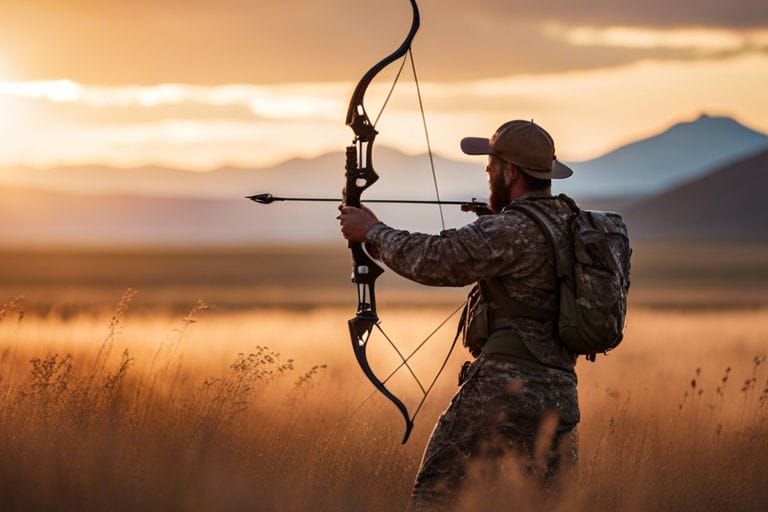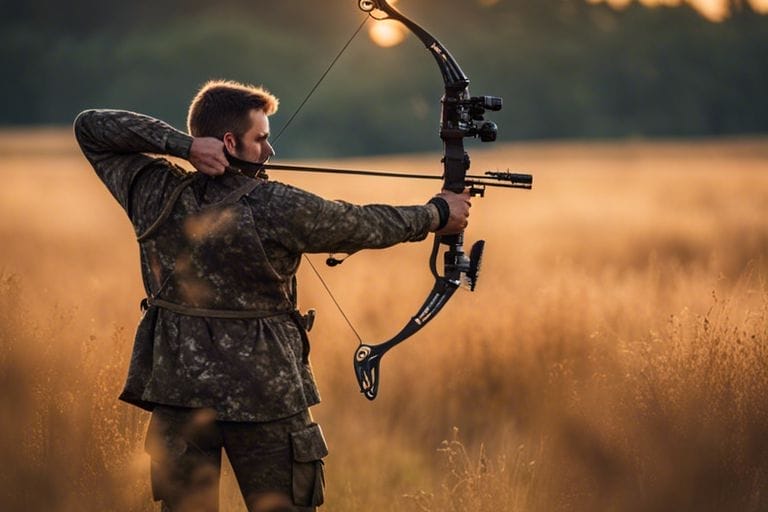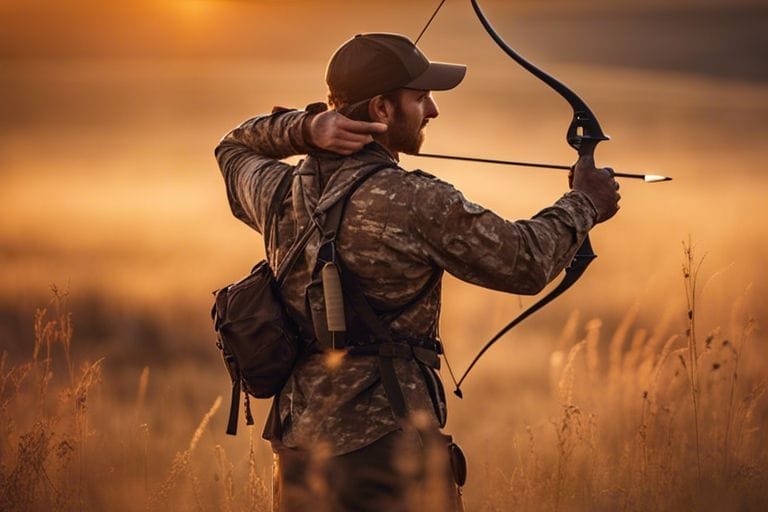Embarking on an archery hunt for antelope can be a thrilling challenge, but with the right knowledge and preparation, it can also be a highly rewarding experience. As you gear up for this pursuit, it’s important to understand the unique behaviors and habits of antelope, as well as the specific techniques and equipment that can increase your chances of success. In this informative blog post, we will guide you through the essential steps and strategies for archery hunting antelope, helping you to maximize your chances of a successful hunt while ensuring a memorable experience in the great outdoors.
Key Takeaways:
- Scout for water and food sources: Antelope are attracted to water and graze on grasses, so locate areas where these resources are plentiful to increase your chances of finding a target.
- Use decoys and blinds: Antelope have keen eyesight, so utilizing decoys and blinds can help conceal your presence and improve your chances of a successful hunt.
- Practice shooting from various distances: Antelope are known for their speed and agility, so honing your accuracy and shooting from different distances can improve your chances of a successful shot.
Equipment and Gear
Obviously, having the right equipment and gear is crucial when it comes to archery hunting for antelope. You need to make sure that you have the proper tools to effectively and ethically harvest your game. For more in-depth discussion on this topic, you can visit the Archery Antelope – Hunting Forums for tips and advice from experienced hunters.
Selecting the Right Bow: Durability and Adjustability
When it comes to choosing the right bow for antelope hunting, you need to consider durability and adjustability. A durable bow is essential to withstand the rugged terrain and unpredictable weather conditions you may encounter. Additionally, having an adjustable bow allows you to make necessary changes to fit your shooting style and comfort, ultimately leading to better accuracy and success in the field.
Arrows and Tips for Optimal Penetration
When selecting arrows and tips for hunting antelope, it’s important to prioritize optimal penetration. Your arrows should be properly matched to the draw weight of your bow, and the broadheads you choose should be sharp and designed for maximum penetration. This combination will ensure clean and effective kills. Knowing that you have the right equipment for the job will give you the confidence to make your shot count.
Importance of Lightweight and Agile Equipment Maintenance
Another crucial aspect of your gear is the importance of lightweight and agile equipment maintenance. Carrying heavy or cumbersome gear can slow you down and affect your mobility in the field. Additionally, regularly maintaining and tuning your equipment will ensure that everything is in top condition, allowing for reliable and consistent performance when you need it most.

Techniques and Strategies
However, hunting antelope with a bow requires specific techniques and strategies to increase your chances of a successful hunt. In this chapter, we will cover mastering the art of stalking with stealth and agility, as well as the role of strategy in hunting antelope. These techniques will help you become a more effective and successful archery hunter.
Mastering the Art of Stalking with Stealth and Agility
When it comes to hunting antelope, mastering the art of stalking with stealth and agility is crucial. Antelope have keen senses and are incredibly alert, making it difficult to get within range for a successful shot. To increase your chances of a successful stalk, it’s important to move slowly and quietly, using natural cover such as bushes and terrain to camouflage your approach. Pay close attention to the wind direction to avoid being detected by the antelope’s keen sense of smell. By moving with stealth and agility, you can get within range for a well-placed shot with your bow.
The Role of Strategy: Offense, Defense, and Timing
Another important aspect of archery hunting for antelope is understanding the role of strategy. You must consider both offense and defense when planning your approach. Antelope are known for their quick movements and evasive tactics, so it’s crucial to anticipate their behavior and plan your approach accordingly. Additionally, timing is key when it comes to hunting antelope. Understanding their daily routines and habits will help you position yourself for a successful shot. By strategizing and planning your approach, you can increase your chances of a successful hunt.
Training and Preparation
Lastly, in order to successfully archery hunt antelope, you need to focus on training and preparation. This includes physical conditioning to improve your endurance and stamina, as well as skill development to hone your archery techniques and shooting accuracy.
Physical Conditioning: Endurance and Stamina for the Hunt
Physical conditioning is crucial for a successful antelope hunt. You’ll need to be in good shape to trek across various terrains and handle the physical demands of hunting. Focus on cardio exercises such as running, hiking, and cycling to improve your endurance. Building up your stamina will help you stay focused and alert during the hunt, as well as enable you to pursue the antelope over long distances.
Skill Development: Techniques of Dribbling, Passing, and Shooting
When it comes to skill development, practicing your archery techniques is essential. Spend time refining your shooting form and accuracy. Set up targets at varying distances to simulate real hunting scenarios and work on shooting from different positions such as kneeling or standing. Additionally, consider practicing stealth and patience, as these qualities are essential for stalking antelope in their natural habitat.
The Hunt in Action
Now that you have your gear and have prepared mentally and physically, it’s time to put your skills to the test as you embark on the archery hunt for antelope. The hunt will require patience, strategy, and the ability to adapt to the ever-changing conditions of the hunt.
Location and Scouting: Finding Prime Antelope Territory
When it comes to hunting antelope with a bow and arrow, scouting the right location is crucial. Look for areas where antelope are known to frequent, such as open grasslands, prairies, or semi-arid scrublands. Once you have identified potential hunting grounds, it’s time to scout the area for signs of antelope activity, such as tracks, droppings, or bedding areas. By familiarizing yourself with the terrain and the behavior of the antelope, you can increase your chances of a successful hunt.
Adaptive Tactics: When to Adjust Formation and Technique
As you begin the hunt, you may find that the antelope are not behaving as expected, or the terrain presents unforeseen challenges. In such situations, it’s important to be flexible and adapt your tactics accordingly. This might involve adjusting your formation to take advantage of cover or changing your approach to outsmart the antelope. Keep in mind that hunting with a bow and arrow requires you to get close to your target, so being able to adapt your technique on the fly is crucial to a successful hunt.
Ethics and Sportsmanship
To ensure a successful and fulfilling antelope archery hunt, it is important to approach the endeavor with a sense of ethics and sportsmanship. This involves respecting the wildlife, adhering to legal regulations, and embracing fair play.
The Importance of Fair Play and Respect for Wildlife
When it comes to antelope archery hunting, fair play and respect for wildlife are essential components of your ethical responsibility. Always ensure that the methods you use are legal, humane, and respectful to the animal. By practicing fair play, you demonstrate your commitment to the principles of ethical hunting and conservation. Additionally, showing respect for the wildlife you pursue enhances the overall experience and contributes to the preservation of the natural environment.
Legal Considerations and Hunting Regulations
Before embarking on an antelope archery hunt, take the time to familiarize yourself with the hunting regulations and legal considerations specific to the area where you plan to hunt. You must understand the limitations and restrictions set forth by the local wildlife management authorities. Complying with these regulations not only ensures that you are hunting ethically and responsibly but also helps maintain the delicate balance of the ecosystem.
After the Hunt
To truly complete your archery hunting experience, there are a few important steps to take after the hunt. First and foremost, you’ll want to reflect on the adventure you’ve just had. Whether successful or not, every hunt provides valuable lessons and memories that you can carry forward to your future pursuits. To further enhance your knowledge and skills, you may want to consider exploring additional resources such as this informative article on How to Hunt Pronghorns on Your Own.
Processing and Conservation: Honoring the Harvest
Once the exhilaration of the hunt has subsided, it’s time to honor the animal you’ve harvested by ensuring that the meat is processed properly and preserved for consumption. This involves field dressing the animal, transporting it to a suitable location for processing, and packaging the meat for storage. It’s important to prioritize proper handling and storage techniques to ensure that the meat stays fresh and safe for consumption. Additionally, you may want to consider donating any excess meat to local food banks or charitable organizations, thereby ensuring that nothing goes to waste.
Equipment Maintenance and Innovation for Future Hunts
After the hunt, it’s crucial to thoroughly clean and maintain your archery equipment. This includes cleaning your bow, arrows, and any other gear used during the hunt. Proper maintenance will help extend the lifespan of your equipment and ensure that it performs optimally during future hunts. It’s also a good time to reflect on your experiences and consider any potential modifications or upgrades to your gear that may improve your future hunts. By staying attentive to the condition of your equipment and embracing innovation, you can continually enhance your archery hunting skills and overall experience.

Conclusion
With these considerations in mind, you are well-equipped to tackle the challenging endeavor of archery hunting antelope. By scouting the area, understanding antelope behavior, and honing your archery skills, you can increase your chances of a successful hunt. Utilizing quality gear and practicing ethical hunting techniques will also contribute to your overall experience. Remember to stay patient and persistent, as antelope hunting requires a combination of skill, knowledge, and determination. By following these guidelines, you can increase your chances of a successful and fulfilling archery hunt for antelope.
FAQ
What is archery hunting for antelope?
Archery hunting for antelope is the practice of using a bow and arrow to hunt antelope, typically in their natural habitat. This method requires skill, discipline, and knowledge of the animal’s behavior and habitat. It is a challenging and rewarding way to hunt antelope.
What equipment is needed for archery hunting antelope?
To successfully archery hunt antelope, you will need a high-quality compound bow or recurve bow, properly matched arrows, broadheads, a well-tuned bow sight and rest, camouflage clothing, a good pair of binoculars, and a range finder. It’s also important to have proper safety equipment, such as a release aid, bowstring silencers, and tree stand harness if hunting from an elevated position.
What are some tips for a successful archery hunt for antelope?
When archery hunting for antelope, it’s crucial to study the animal’s behavior and habitat, including their feeding and watering patterns. It’s important to be patient, use scent control methods, and practice your shooting skills regularly. Consider using decoys or calls to attract antelope within range. Additionally, make sure to accurately judge distances and be prepared for long shots, as antelope are known for their keen eyesight and can be difficult to approach.


